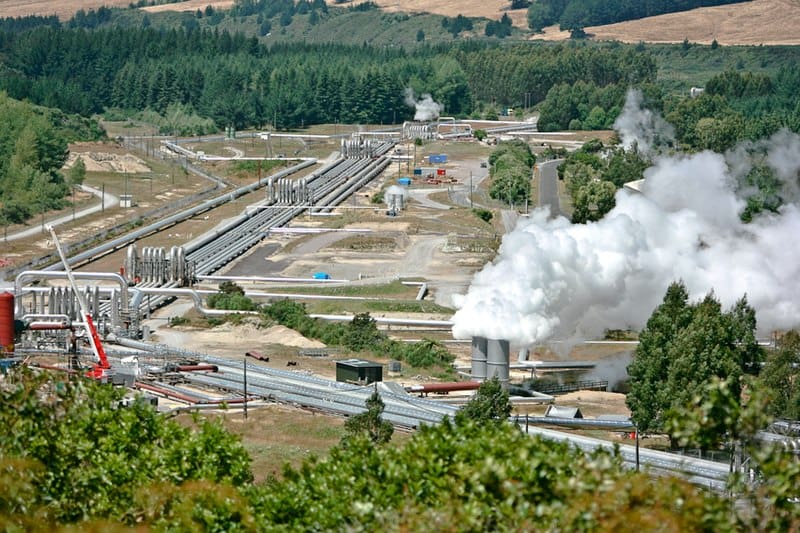Fluid-removal rates of geothermal must be carefully monitored to avoid land subsidence. Land subsidence is a gradual sinking of the earth’s surface in response to the removal of fluids within the pore spaces of underlying rocks. If fluid removal rates and volumes exceed reinjection rates and volumes, subsurface reservoirs could consolidate, leading to land subsidence observed at the surface. The movement of land can damage infrastructure in close proximity to the geothermal well, including the power plant itself. The consolidation of reservoirs also reduces available pore space, open fracture space, and fracture pathways for fluid storage and movement, which could decrease the efficiency or operability of the geothermal system. A geothermal project should be designed such that fluid removal rates closely match reinjection rates to prevent compaction in the subsurface reservoir.1Beard, J.C., and Jones, B.A., eds. (2023, May 1). Chapter 10: Environmental Considerations and Impact. The Future of Geothermal in Texas. p. 269. https://energy.utexas.edu/research/geothermal-texas
The sole concern with land subsidence related to geothermal projects is damage caused to infrastructure in close proximity to the geothermal well, including the power plant. True or False?
Incorrect
In addition, the consolidation of reservoirs also reduces available pore space, open fracture space, and fracture pathways for fluid storage and movement, which could decrease the efficiency or operability of the geothermal system.
Correct
In addition, the consolidation of reservoirs also reduces available pore space, open fracture space, and fracture pathways for fluid storage and movement, which could decrease the efficiency or operability of the geothermal system.
Land Subsidence at the Wairakei Geothermal Field in New Zealand
A real-world example of land subsidence is the Wairakei Geothermal Field in New Zealand, built in 1958. Early on during the project, land subsidence was as much as 46 feet and impacted local communities when rigid structures such as pipelines, roads, concrete drains and transmission lines required maintenance.2Allis, R. G. (2000). Review of subsidence at Wairakei field, New Zealand. Geothermics, 29(4-5), 455-478
A real-world example of land subsidence is the Wairakei Geothermal Field in New Zealand, built in 1958. Early on during the project, land subsidence was as much as 46 feet and impacted local communities when rigid structures such as pipelines, roads, concrete drains and transmission lines required maintenance.3Allis, R. G. (2000). Review of subsidence at Wairakei field, New Zealand. Geothermics, 29(4-5), 455-478

Image Credits
- 800px-Wairakei_Geothermal_Power_Station-5834-Wiki: http://www.freenzphotos.com, Wikipedia